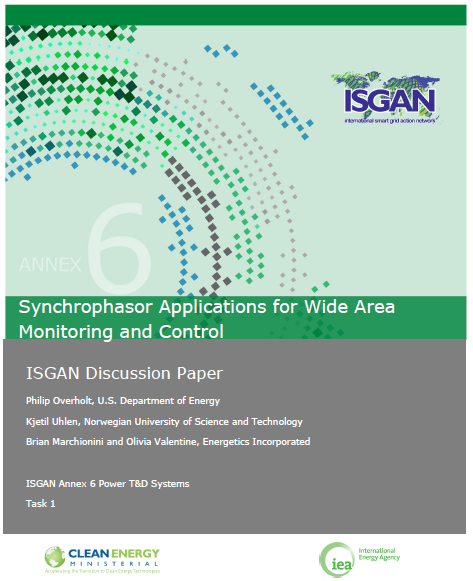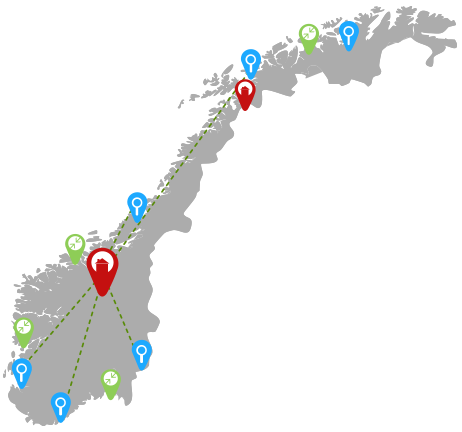This ISGAN discussion paper (2016) describes synchrophasor applications for wide area monitoring and control in North America and Norway. It is the result of a collaboration of representatives from the United States and Norway.
A synchrophasor is a time-synchronized measurement of a quantity described by a phasor. Like a vector, a phasor is a complex number that represents both the magnitude and phase angle of voltage and current sinusoidal waveforms at a specific point in time. Devices called phasor measurement units (PMU) measure voltage and current, and with these measurements, calculate parameters such as frequency, real power (MW), reactive power (MVAR) and phase angle. Data reporting rates for these parameters are typically 30 to 60 records per second, and may be higher. In contrast, current supervisory control and data acquisition (SCADA) systems typically report data every four to six seconds – over a hundred times slower than PMUs.
Measurements taken by PMUs in different locations on the network are accurately synchronized with each other and can be time-aligned, allowing the relative phase angles between different points in the system to be determined as directly measured quantities. Synchrophasor measurements can thus be combined to provide a precise and comprehensive «view» of an entire interconnection, allowing unprecedented visibility into system conditions.
The report may be downloaded here: http://www.iea-isgan.org/index.php?r=home&c=5/378
Del på facebookDel på linkedIn









